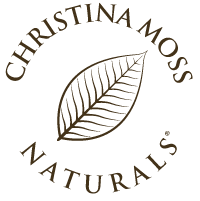If your conventional shampoo, lotion, or makeup goes on smooth, silicones are probably the reason why. These synthetic ingredients are added to skincare products to improve the way they feel on your skin, but they cause enough side effects that I don’t want them anywhere near my products…or my body. Here’s everything you need to know about these common ingredients.
What are Silicones?
Silicones start out from a natural product – a substance called silica. However, they undergo so much chemical processing before they’re used that they really can’t be called anything other than synthetic.
This ingredient is everywhere in conventional hair, skin, and cosmetic products. Manufacturers love them because of the impact they have on a product’s texture. When silicones are in the mix, products go on smoothly, without tugging or feeling oily or sticky. Hair washed with silicone products feels silkier, and skin ends up feeling smoother. Silicones are a cheap, easy way to get this effect, but there are other types of costs involved.
Where Can You Find Silicones?
Lots of places. The list includes skin creams, serums, shampoos, other hair care products, makeup products like foundation, eyeshadow, blush, liquid and pencil eyeliners, and lipstick. You’ll also find them in anti-aging skincare products, as they can help blur fine lines and wrinkles.
Silicones’ Downsides
Silicones have an occlusive effect. This means they easily build up and smother your skin and scalp. In the short-term this buildup may help protect against outside pollution, but if you rely on them too often your skin might become dependent, which in the long run leaves it duller and less healthy.
The more silicone builds up on your skin and hair, the tougher it is to clean off. If it builds up on your hair, you’ll end up with locks with less volume. The occlusive effect will prompt your hair to retain fats and secrete oil more quickly, which means you’ll have to wash it more often… which means you’ll need to use more of the product that put silicones in your hair in the first place. You’ll also have to buy more of the product, which I’m sure is something that makes the manufacturers quite happy!
Silicone is one of the many ingredients the European Union has banned for its potential to impact our body’s hormones. While the FDA contends that there is no danger at the level we currently experience this chemical, we don’t really know the consequences of buildup over time.
The final downside of using silicones is their impact on the environment. While research is still ongoing, in 2008 an Environment Canada review found that certain siloxanes have the potential to accumulate in aquatic organisms. Environmental activists encourage consumers to avoid silicones until more is known about the full impact they have on our ecosystem.
Avoiding Silicones
The best way to avoid silicones is to keep a sharp eye on your ingredients list. The two most common types of silicones are dimethicone and cyclopentasiloxane. Look for products that are silicone free. The easiest way to find them? Stick to natural products that don’t use any synthetic ingredients.
There are better ways to get great texture in your skincare products than silicones. Look for natural alternatives and skip the synthetics altogether – the environment will thank you!
What kind of products have you found that contain silicone? Let me know about them in the comments below!

Thanks for the whole thing!
So I see glycerin in your ingredients. Is that the substitute for silicone? Thank you!
Hello Foye,
Thank you for visiting the website. I think you’re referring to the conditioner, yes? But to answer your question, Silicones and Glycerine have uniquely different properties and I do not use one in place of the other. While still assuming you’re talking about the conditioner, I do use a combination of ingredients that work together as a silicone replacement.
Christina